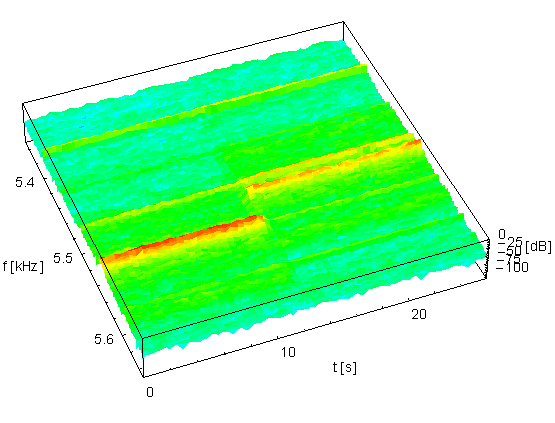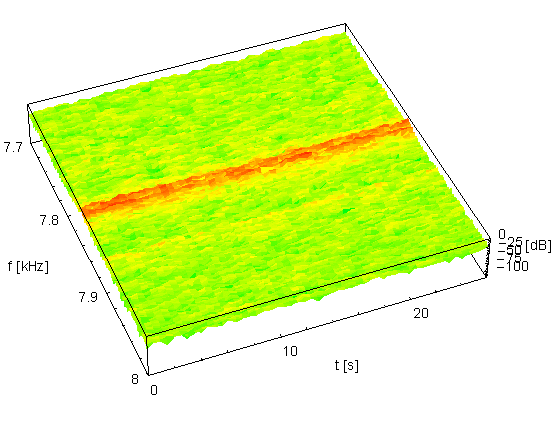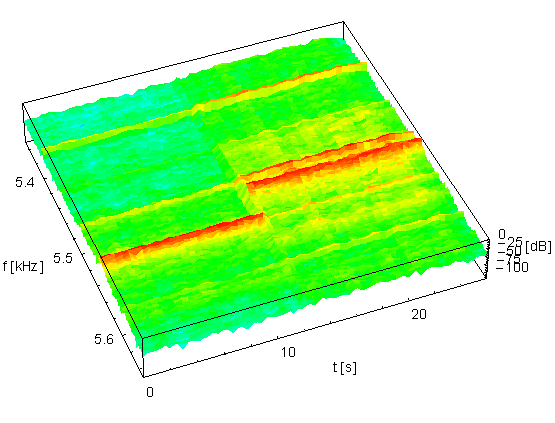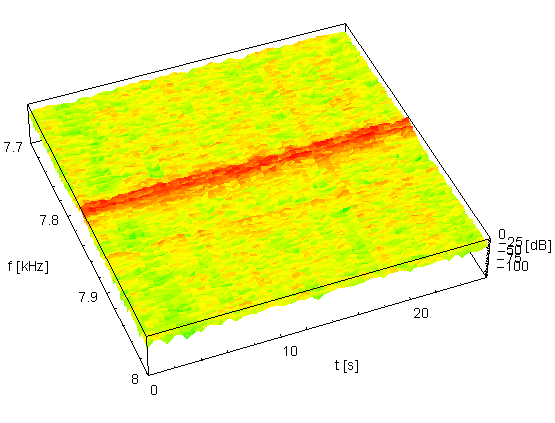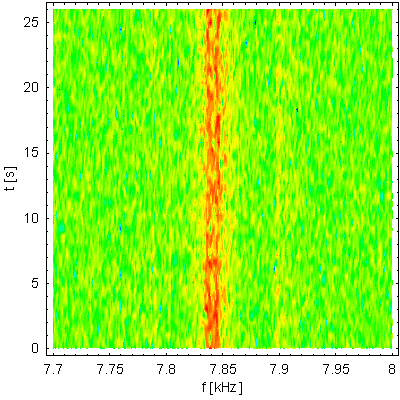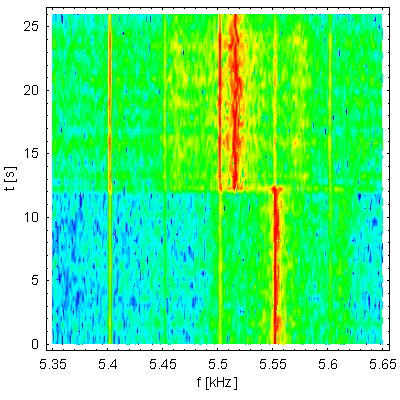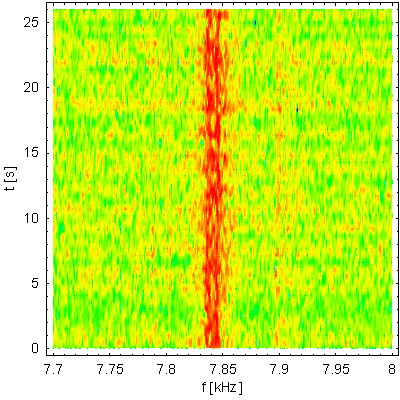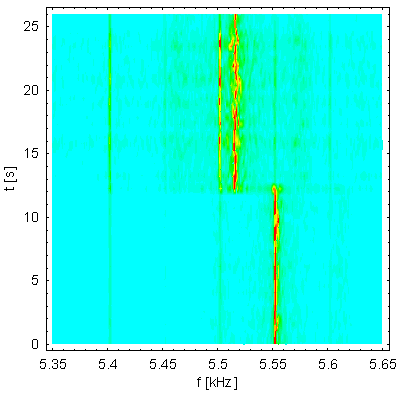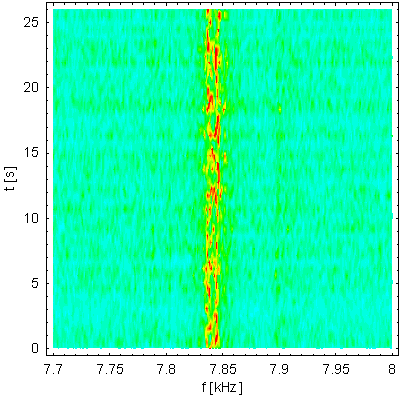Here I present a measurement intended to show that the strange 50Hz lines are indeed in the beam spectrum. The measurement was done during collimator MDs on 4/10/04 at 22h06. It was one LHC batch coasting beam (72 bunches, ca 1e11 each). No explicit excitation.
Below is the link to the WAV file with the signal time domain record. You can hear that after some 12s the tune whistling slightly decreases. This is because the tune was taken from one of the "resonance" 50Hz lines and the betatron oscillations got smaller.
Below are time domain signals.
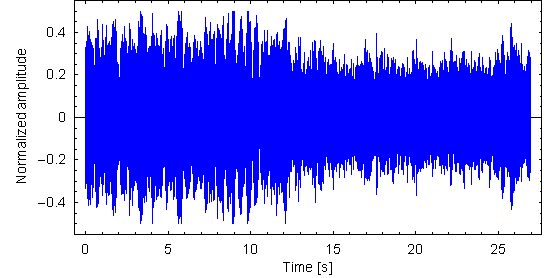
Fig. 1H. H plane time domain signal.
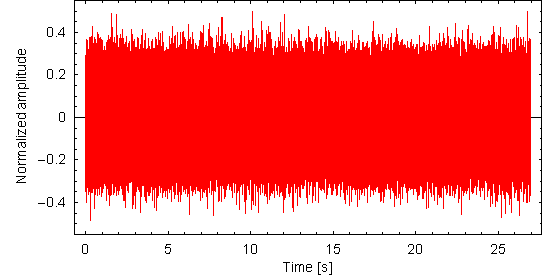
Fig. 1V. V plane time domain signal.
